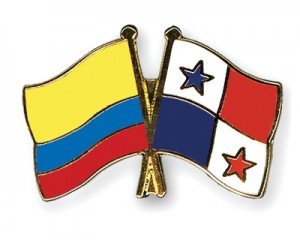Earlier this month, economic relations between Colombia and Panama became tense after Colombia threatened to put Panama on their so-called “tax haven” list. The list, which Colombia uses as a basis for financial transparency, is comprised of countries who either don’t share tax information of Colombians abroad, or violate what they deem as appropriate transparency standards. Colombia wants countries to disclose how much money their countrymen have invested in the exterior, in order to properly tax them, and avoid capital flight, which is common in many parts of Latin America.

Why is this important?
For Colombians, which make up the largest percentage of foreigners working and living in Panama, this is very significant. It is also significant to offshore investors from the South American nation. The reason being is that if Colombia had in deed added Panama to the list, any money transfers to Panama would be taxed at 33%, rather than the normal 10%. This could have been detrimental to offshore investors who move money in and out of the country frequently, in terms of investments, savings accounts, and real estate.
After the announcement by Colombia, Panama sent an official statement to Colombian government stating that they would levy sanctions on them, and even revoke visas for their citizens if they were not immediately removed from the list. If Panama did go through with this, it would have made a serious impact on Colombia, which is fighting to shorten a deficit gap and reign in tax delinquents. It also would have severely hurt their economy as far as trade. Panama is actually the largest foreign investor in Colombia after the United States, and as has been one of Latin America’s fastest growing economies since 2008, showing a 8.4% GDP growth last year. Making financial enemies wouldn’t only be imprudent it would have been detrimental.
A Potentially Strong Future
When you put this recent political posturing aside, Panama and Colombia actually have a very good financial relationship. The problem is, like in any partnership, when one side isn’t cooperating, it builds a level of distrust and anger. Colombia is not doing as well as Panama financially, and is trying to keep Colombian investors’ money in the country, and back into the business infrastructure they are trying to build. The last thing they want is for that money to move north (Panama), where tax codes, currencies, and inflation rates are much more suitable to businesses.
All this being said, the economic relationship between the two nations has great future potential. Colombia is ripe with natural resources that Panama doesn’t have, and presents a great market for Panamanian companies to explore. Conversely, Panama offers the ideal fiscal climate, and geographic location, for many of Colombia’s biggest businesses to invest in. Furthermore, Panama is in the midst of a massive sustained growth period; something the Colombians desperately need. Keeping investment lines clear and restrictions at a minimum is critical for the future of these two countries’ relationship. And it could have many net benefits for the future.